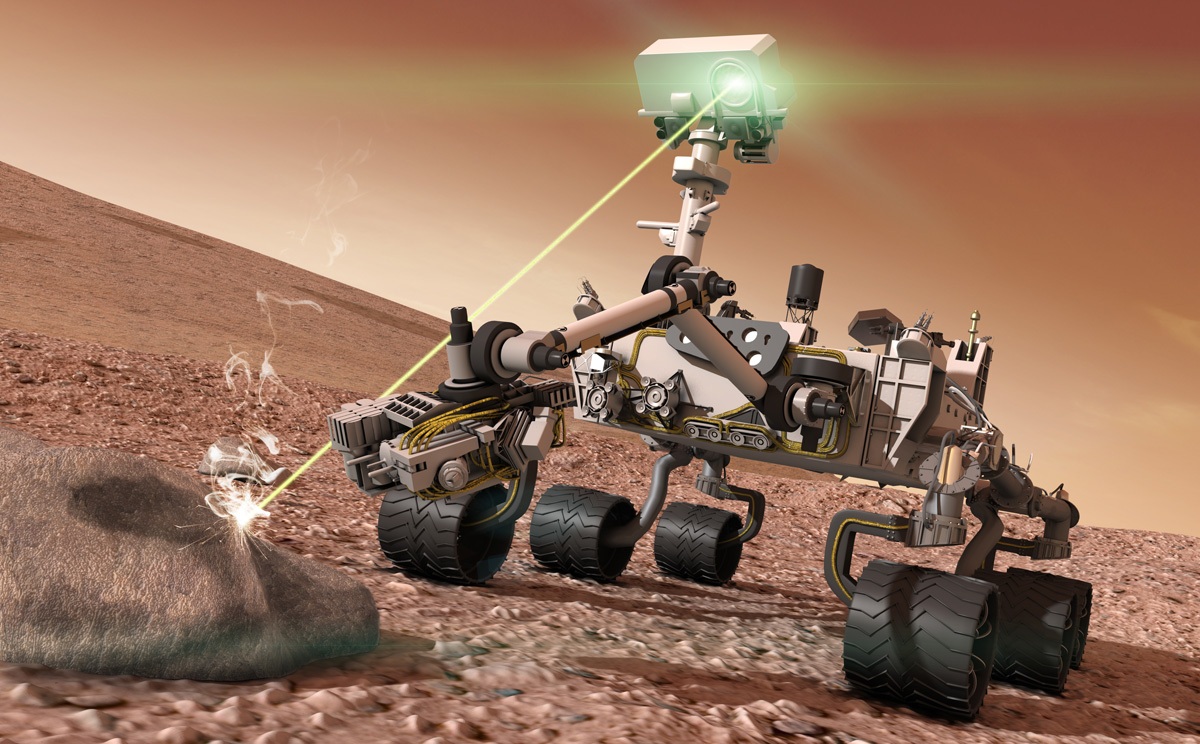
Neural networks and artificial intelligence (its weak form) gradually change our life. Smart cars, IoT-devices with digital assistants and much more simplifies a person to perform working and household tasks. AI is used in space. For example, NASA is working with machine learning and machine vision technologies to explore Mars. It is the AI that helps the Curiosity rover to select suitable targets for analysis using a laser and a spectrograph. Last year, using this method, dozens of objects were checked, information about which has already been sent to Earth. AI provides Curiosity work offline - when a team of scientists from the Earth can not communicate with the device.
This feature was not originally incorporated into the rover, but
appeared after updating the rover software. Since 2016, the rover has used the
ChemCam laser tool to study Mars rocks and other uses 54 times. And almost every time the AI was used in choosing a target. The software platform in question is called AEGIS (Autonomous Exploration for Gathering Increased Science).
In most cases, AEGIS was used to guide the ChemCam laser at the target. After confirming the capture of a target, the rover releases a laser pulse that evaporates part of the rock. The spectrograph analyzes the composition of the vaporized substance, as a result of which scientists receive information that Curiosity has met on its way over the rock.
As mentioned above, AEGIS allows the rover to work more efficiently. Previously, the rover could perform a minimum of tasks in the event of a break in communication with the Earth. Now AEGIS takes control in such cases, and Curiosity is actively exploring the surface of Mars. Rover operators every day engaged in "instructions" - set the list of commands to be executed by the system, based on the images and data of the previous day. If in the process of movement the rover loses contact with the Earth, and nearby are the objects that scientists want to study, then AEGIS gives the command to "shoot" with a laser, after which the spectrograph comes into play.

"Time is a great value on Mars," says one of the members of the Curiosity management team. "AEGIS allows us to use the time that was previously wasted, because we had to wait until someone on Earth made a decision about the action."
AEGIS has already
helped scientists discover a number of interesting minerals. In some cases, the study of rocks in the offline mode gave specialists valuable data that made it possible to plan the next day. The AI perfectly fulfills the task for which it was created - obtaining more than before, the amount of valuable scientific data per unit of time.
Prior to installing the new software platform, Curiosity was not always inactive when there was no connection to Earth. Sometimes he fired a laser at predetermined scientific targets, but this happened almost blindly. Scientists had hoped that the laser somewhere, yes fall, and you can get valuable scientific data. Of course, the “shot” with the laser was made in a certain direction, and not just into the “white light”, so experts sometimes did get interesting results, but this did not happen so often.
“In 50% of cases, the hit went into the ground - which is also useful, but the study of minerals is much more valuable for our scientists,” said Raymond Francis, a member of the Curiosity group. Now the rover can shoot not just the minerals, but the rocks of a certain color, shape and size. The software works with the rover cameras, getting an image of the environment. If a goal is fixed, an impulse follows. Sometimes operators use the possibilities of AEGIS - this is done in the case when experts are not sure of the accuracy of the pick-up “manually”.
 Mars 2020
Mars 2020The next generation rover will fly to the Red Planet with preinstalled software like AEGIS. Also, the new rover will be equipped with a new type of spectrometers. This is the
Mars-2020 rover (Eng. Mars 2020 Rover Mission). Its launch is planned for 2020 with an arrival around February 2021. His main task is to conduct astrobiological research. Experts hope that it will help clarify the situation with life on Mars - perhaps the "Mars 2020" will be able to find some traces of the existence of life in the past of the Red Planet.
In addition, with the help of this rover plans to conduct studies of the planet's surface, geological processes and the history of the evolution of Mars. For the first time, the intention to launch a new rover at NASA was announced in 2012 at the autumn meeting of the American Geophysical Union in San Francisco.